The Future of Customer Service: AI and Human Collaboration
Unless you’ve been under a proverbial rock, you’ve heard and seen a massive amount of change in customer service — particularly in the past year. Many are pronouncing that there is no greater revolution in customer care than what’s happening right now. Directors and managers of call centers are likely getting questioned by peers in leadership with questions such as, “How are we prepared for Artificial Intelligence (AI)?” “What are we doing to leverage the latest technology?” And, finally, “What is the future of customer service?”
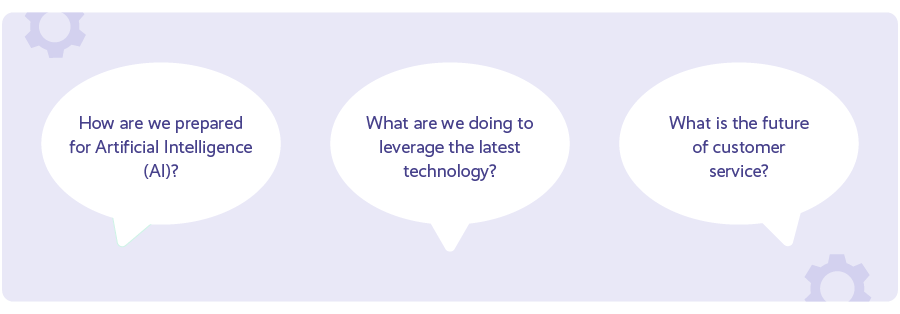
But First, A Look Back at Changes in Customer Service
Before we begin a deep dive into AI, let’s first talk about the changes that have happened in the past. If you’ve been around for a bit, this isn’t the first time that you’ve heard everyone from analysts to industry insiders proclaim that soon we will replace the humans who are on the frontline of customer relationships. Similar kinds of declarations were made when interactive voice response (IVR) systems came out and again when chatbots became commonplace on websites, providing automated responses that did not require human intervention.
That’s not to say that IVRs cannot save companies significant amounts of money. According to DMG Consulting, customer service contact centers that have implemented an IVR system typically handle approximately 55 to 95 percent of the calls, depending on the vertical and the effectiveness of the system. An IVR can save companies millions of dollars. A typical customer service call handled by a live agent costs $3.00 to $6.50, while an IVR transaction costs $0.03 to $0.25 per minute.
Saving millions of dollars is incredibly impressive, and many contact centers have realized these financial benefits and more. But, rather than replacing contact center agents, IVRs automate run-of-the-mill inquiries. More complicated inquiries still require in-depth knowledge that only contact agents possess. Even without directly replacing agents, IVRs have served businesses well for their inherent cost savings.
You can make a similar argument for savings realized for website bots. Bots have enabled sales and marketing teams to let potential customers learn about a company’s business or service without having to directly interact with a live person. By providing material that relates to information that a prospect has downloaded in the past, a bot can help further the customer buying cycle. This allows organizations to share important information without the intervention of expensive sales personnel until the prospect decides it is time to talk to a live human.
Finally, another change in customer service has been the overwhelming number of channels that many customers may use to contact their favorite brands. Omnichannel — being able to take contacts from text, chat, social media, and the telephone — has become standard across contact centers, and the ways that customers can contact your business will only continue to expand in the future.

The Future of Customer Service: AI
Gartner has predicted that by 2026, conversational artificial intelligence deployments within contact centers will reduce agent labor costs by $80 billion. “Gartner estimates that there are approximately 17 million contact center agents worldwide today,” said Daniel O’Connell, VP analyst at Gartner. “Many organizations are challenged by agent staff shortages and the need to curtail labor expenses, which can represent up to 95% of contact center costs. Conversational AI makes agents more efficient and effective, while also improving the customer experience.”
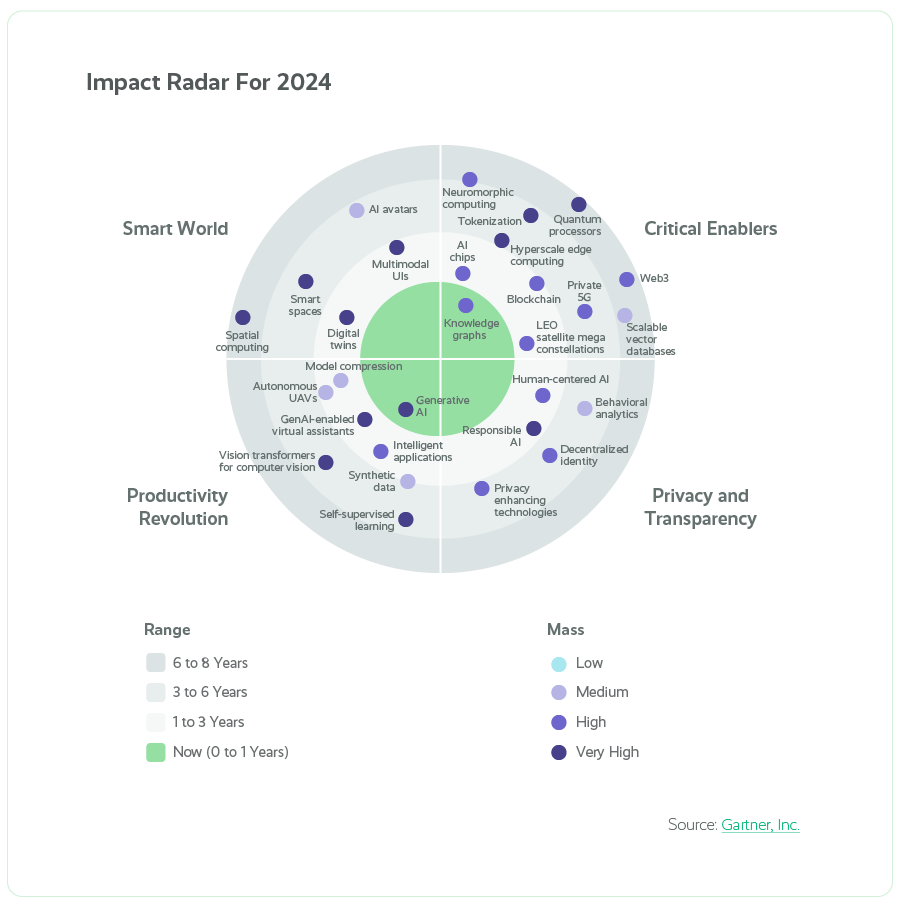
Gartner further projects that one in 10 agent interactions will be automated by 2026, an increase from an estimated 1.6% of interactions today that are automated using AI. Conversational AI can automate all or part of a contact center customer interaction through both voice and digital channels, through voicebots or chatbots and it is expected to have transformational benefits to customer service and support organizations within two years.
Artificial intelligence (AI) is playing a significant role in transforming the future of customer service. With AI-powered analytics and predictive modeling, businesses can analyze customer data to identify patterns and trends, allowing them to proactively address customer needs. AI algorithms can also personalize customer interactions by leveraging data from previous interactions to offer tailored recommendations and solutions. This level of personalization enhances customer satisfaction and loyalty.
How You Can Leverage AI in Your Contact Center: Chatbots
While AI is being predicted to grow exponentially by Gartner and other industry insiders, some may wonder what this means in practical terms and usability. One of those applications is even smarter AI-powered chatbots. These types of virtual assistants will become more intelligent and capable of handling complex customer inquiries. They will be able to understand natural language processing, making conversations with them feel more human-like and personalized.
This could mean that soon you could contact a company’s customer service and have a chatbot that not only understands your problem but also offers personalized solutions based on your previous interactions with the company. These chatbots will be able to access and analyze vast amounts of customer data, allowing them to provide tailored recommendations and assistance.
Leverage AI in Your Call Center: Customer Service Interactions
Another exciting development is the integration of AI into voice-based customer service interactions. As voice assistants like Siri, Alexa, and Google Assistant become more prevalent in our daily lives, they also play a significant role in customer service. Companies can use voice or text recognition technology and AI algorithms to analyze customer interactions and provide real-time insights to customer service representatives. This helps your team understand the emotions and sentiments of customers, allowing them to offer more empathetic and personalized assistance. As you look at potential tools, pay attention to those that can analyze text-based interactions which are becoming more prevalent than voice contacts in many call centers.
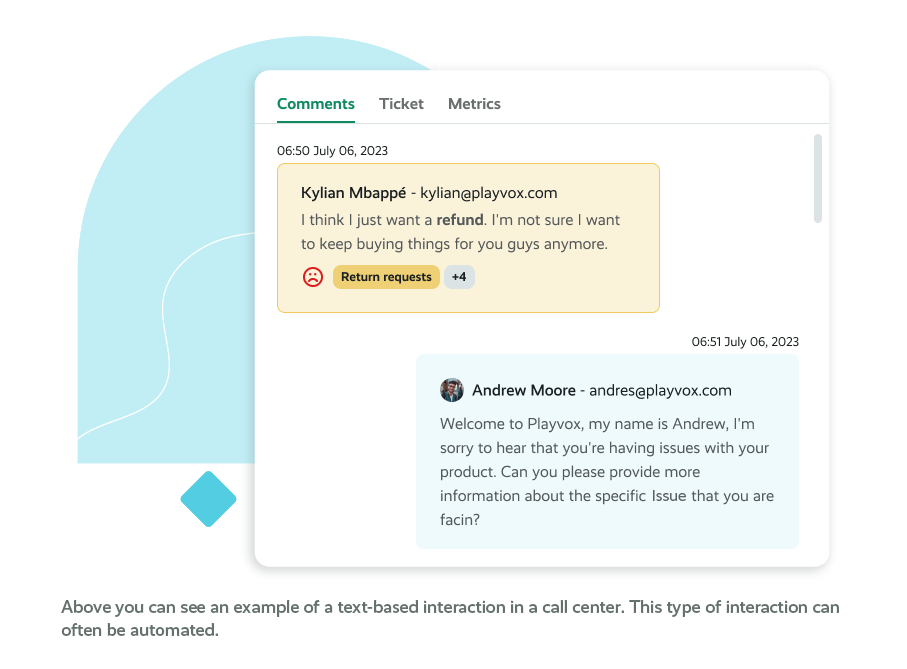
AI for Quality Management
As we think about the future of customer service, Quality Management (QM) is also seeing a major makeover in its use and application. Traditional QM systems often only analyze 2-3% of all interactions. This can lead to making misleading conclusions and even fixing issues that aren’t bigger problems because you’re basing any modifications on incomplete data.
AI-powered sentiment analysis enables companies to proactively identify potential issues or dissatisfaction among customers. By analyzing social media posts, online reviews, and customer feedback, AI can detect patterns and trends that indicate customer unhappiness. This allows companies to address problems before they escalate and provide a better overall customer experience.
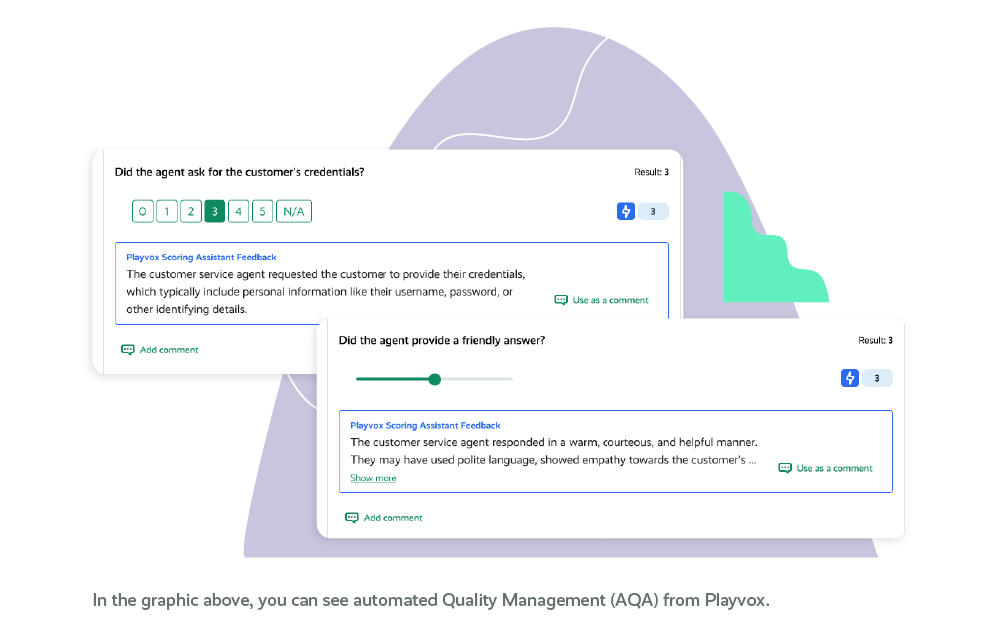
In addition to sentiment analysis, most call centers will benefit from a collection of functionality that lets operational teams get the full picture of what is driving customer interactions while also identifying the underlying sentiment. Some AutoQA solutions also provide AI to assist your analysts with scoring to drive a more efficient scoring and feedback process, but also allow your team to gain confidence in the results.

Other AI Applications in the Contact Center
The future of customer service will also involve the use of augmented reality (AR) and virtual reality (VR) technologies. These immersive technologies will enable customers to visualize products or solutions more interactively. For example, imagine being able to try on clothes virtually or test out furniture in your living room before making a purchase. This will enhance the customer experience and reduce the need for returns or exchanges, ultimately saving time and resources for both customers and businesses.
Lastly, automation will continue to play a significant role in customer service. Routine tasks such as order tracking, FAQs, and basic troubleshooting will be handled by AI-powered systems that can provide quick and accurate responses. This will free up customer service representatives to focus on more complex and high-value interactions, where their expertise and personal touch are most needed.
Getting Ready for the Future of Customer Service (AI) in Your Call Center
As you read through the multitude of ways that AI can and will be leveraged in your contact center, you need to think about how you can prepare to leverage AI in the future. Here are a few actions you can take now to get ready for AI and the future of customer service.
1. Map Repeatable Processes
AI can seem like a panacea for better customer interactions, but you won’t be able to fully realize the promise of AI without standardizing processes. If many interactions involve customized replies or responses, AI will only expose things that aren’t standard. If you can get ahead of mapping anything that can be repeatable, you’ll better prepare your organization for AI in the future.
2. Experiment, Experiment, Experiment
With all of the talk of AI, it is easy to get ahead of yourself and go all in before your organization is really ready. That’s why we recommend experimenting with any tool or solution you are considering. For example, if you are looking at implementing an AuoQA solution, you’ll want to test the solution to calibrate against any system you are using today. You could do that by comparing and contrasting responses from QA analysts against the AI solution. You could also start by analyzing sentiment to understand what’s driving customer interactions and then expand your use of the solution as you gain confidence in the results you are seeing from AI.
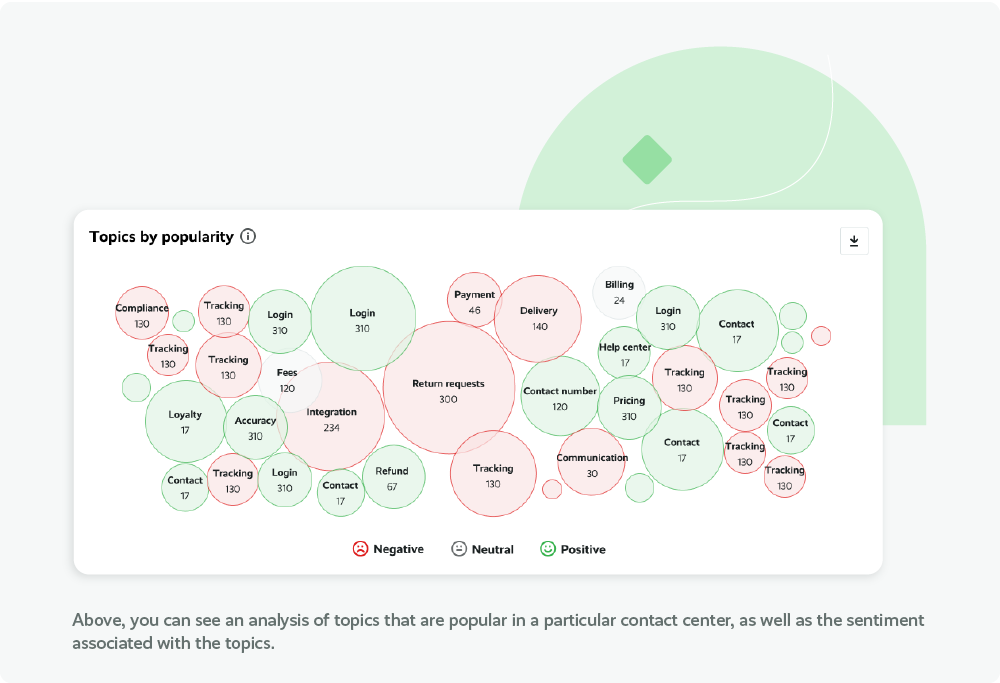
3. Start Small, Implement Gradually
The difference between contact centers and many other businesses is that contact centers absolutely must be available 24/7. Downtime is just not acceptable when there is a problem with a product or service and customers need to get a hold of your business. That’s why we recommend for you to start small – with a single team of agents or smaller departments. If you do find a problem, then you can fix it and not impact your entire operation.
4. Build Confidence Over Time
It is often said that it is extremely difficult to overcome a bad first impression. We also all know how powerful word-of-mouth can be. Agents all talk, particularly if you are trying to put a new process or tool in place, as many are wary of changes. If you immediately “go big,” and agents have early problems, you can be confident that the experience will be shared with others. In contrast, if you start small and then use the experience of the pilot group(s) to build confidence across the larger organization, it will be easier to implement the solution to other parts of the business. As you begin to see success and gain the confidence of your teams, you can then expand across your company.
5. Ask Your Agents
No one understands the issues your customers commonly encounter than your contact center agents. You should loop them into the process and ask for suggestions on how technology can make their job easier and improve the customer experience. You’ll likely get many ideas that you haven’t considered previously.
In conclusion, the future of customer service is full of exciting possibilities. From smarter chatbots to voice-based interactions, AI-powered sentiment analysis, augmented and virtual reality experiences, and automation, customers can expect more personalized experiences from the brands they love. An oft-overlooked facet to modernizing customer experience is a continued focus on the agents who serve your valued customers. To learn more about how you can better motivate and engage your agents, download Celebrating Success In The Contact Center: Top Tips For Engaging And Motivating Agents.







